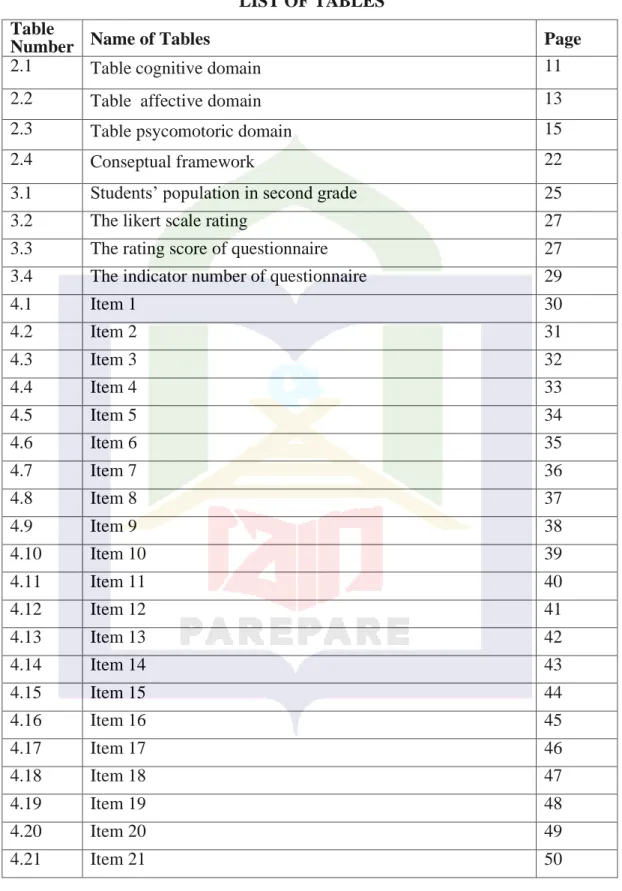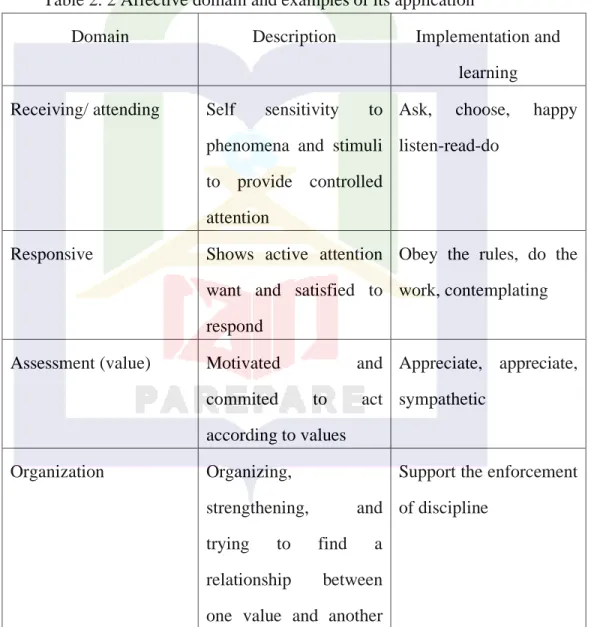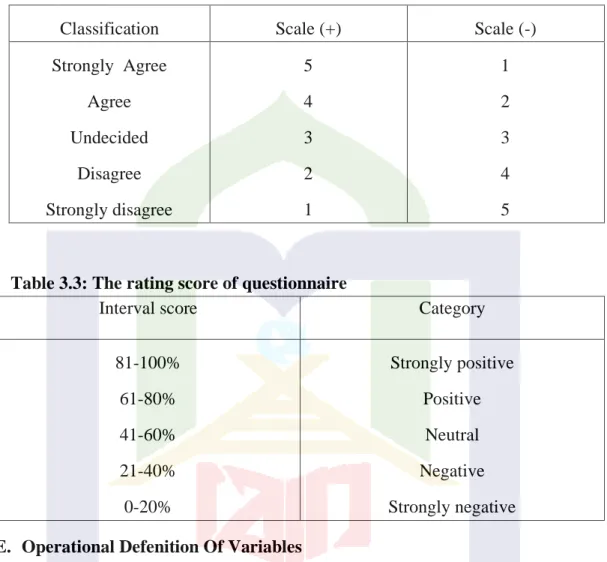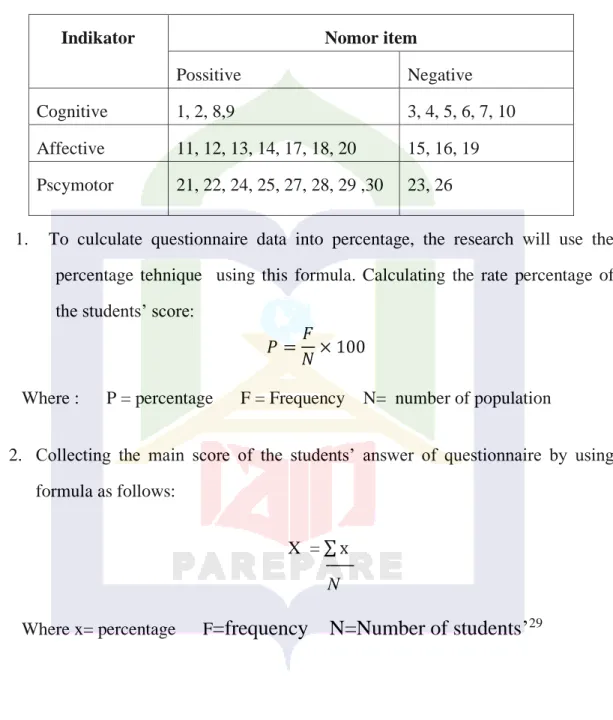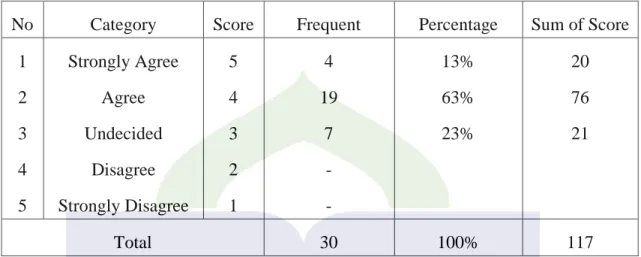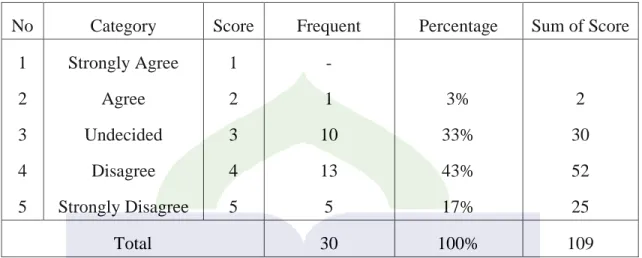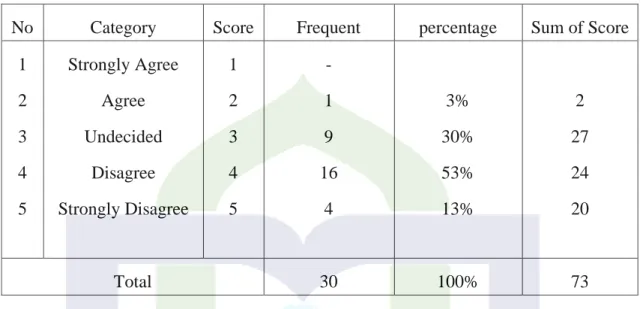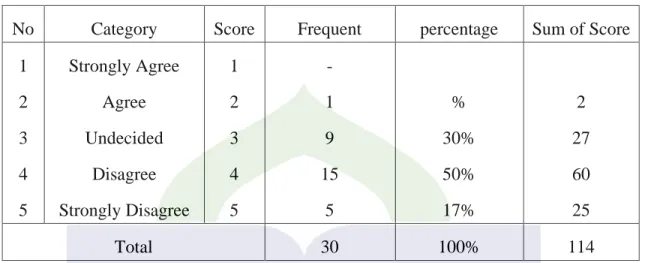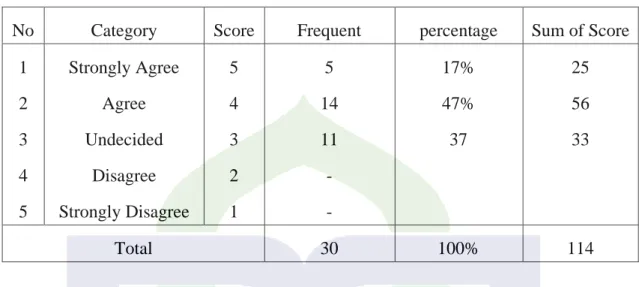The title of Thesis: The students' learning domain in English process during pandemic covid-19 at SMAN 10 Pinrang. The Title of Thesis: The Students' Learning Domain In English Process Under Pandemic Covid-19 At SMAN 10 Pin rank Name of the student: St.Nurlina. Thesis Title: Students' learning domain in English process during pandemic covid-19 at SMAN 10 Pinrang.
The purpose of this study was to determine the students' learning domain in English process during pandemic covid-19 at SMAN 10 Pinrang. And also from the value that the students' learning evaluation showed a high score, so it can be said that the domain of the students, when the online English learning process was conducted during the covid-19 pandemic, was maximum in class XII MIPA 2.
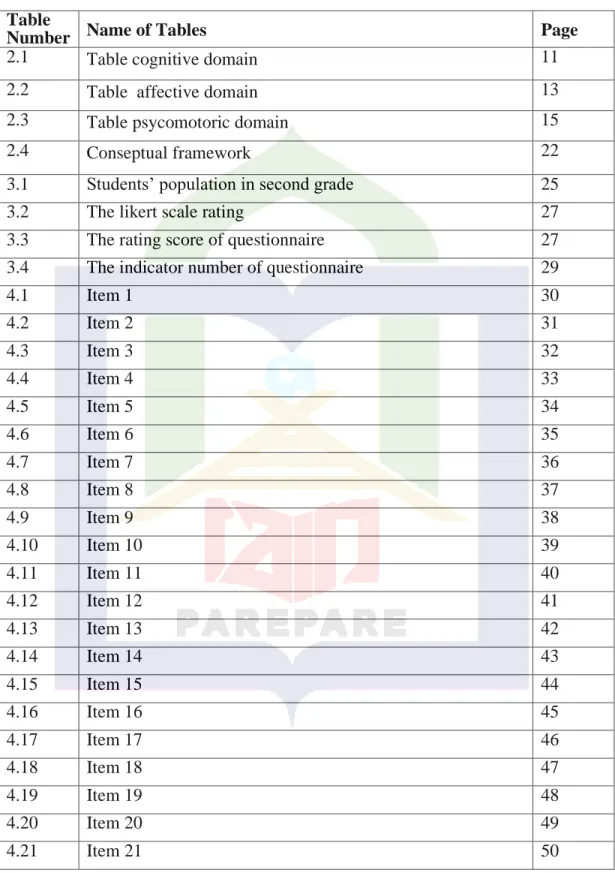
- Background
- Research Questions
- Objective of The Research
- Significant of The Research
How is the students' learning domain in English going during pandemic Covid-19 at SMAN 10 Pinrang. Is the students' learning domain in English process maximal when the online learning process during the pandemic Covid-19 at SMAN 10 Pinrang. To know how the students' learning domain in English is going during pandemic Covid-19 at SMAN 10 Pinrang.
To know, the learning domain of students in English is the largest when the online learning process during the Covid-19 pandemic at SMAN 10 Pinrang. The researcher hopes that another researcher can find many references to carry out a similar researcher, especially the learning field of students in the process of English during the Covid-19 pandemic.
- Previous Related Research Findings
- Some pertinent ideas
- Conceptual Framework
- Hypothesis
7Amelia, “Students' Attitudes in Learning Vocabulary through Quantum Learning in Second Grade MAN 1 Parepare” (Diss. IAIN Parepare, 2018), http://repository.iainpare.ac.id/985/. Understanding something learned in the form of translation (changing form), interpretation (explaining or summarizing), and extrapolation (extending the meaning of one material). Application is of a higher level than the previous two aspects, namely knowledge and understanding. The example of an operatic verb is Execute and Implement.
The Thurstone scale is made in the form of a number (40-50) of statements relevant to the variable to be measured, then a number of experts (20-40) rate the statement's relevance to the content or construct to be measured. The data obtained can be in the form of data ranges or ratios (two alternatives).
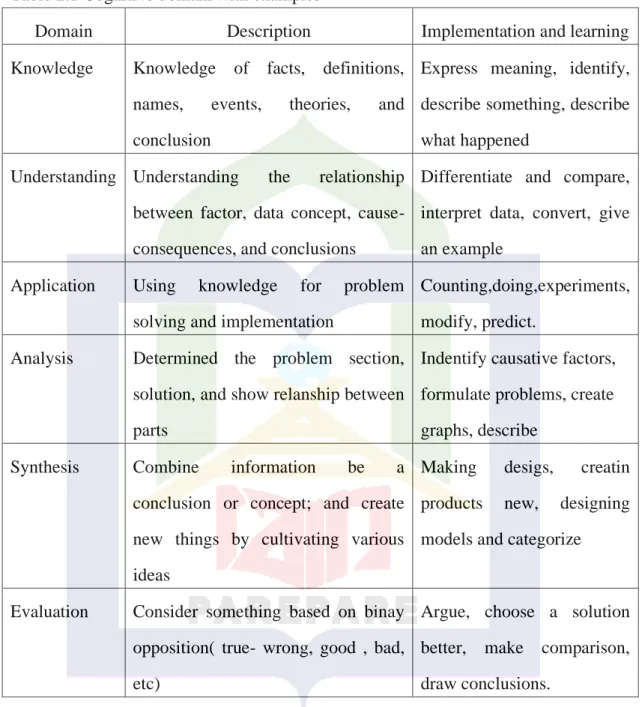
24
- The Research Design
- Location and Duration of the Research
- Population and Sample
- Instrumen of the research
- Operational Defenition Of Variables
- Technique Of Data Analysis
The population is the overall target that should be investigated, and in that population the research results are used25. The population of this study is grade XII students in SMAN 10 Pinrang, where grade XII is divided into four classes. The purposive sampling means showing the characteristics of the sample or certain characteristics that are considered to have a close relationship with the characteristic.
Researchers conducted interviews with English teachers at the research venue to find out the conditions at the school and the situation of the learning process that occurred during this pandemic. Documentation is one of the techniques used to collect data through systematic direct recording of what is stored in the office. Researchers collect data obtained from the research location in the form of data and notes regarding the condition of the research location.
Instruments or tools of data collection are called questionnaires that contain a number of questions or statements to be answered by the respondent. Of the three areas, each questionnaire represents the category level of the questioner's statement to assess the area of student learning. The dependent variable is the main concern (it is a valid factor in observation) and in the same research objective.
The questionnaire was one of the support techniques that research aimed to stare a lot at the students' domain. It was distributed to the students, and after sharing, the students chose only the best answers that suited them. To calculate questionnaire data in percentage, the research will use the percentage method using this formula.
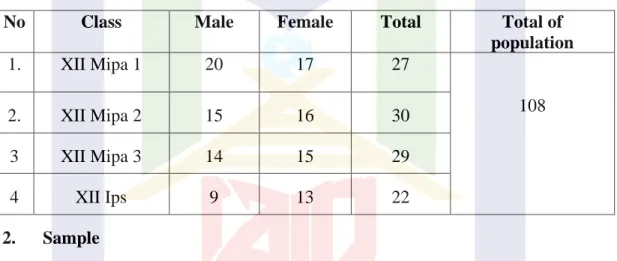
Findings
Based on the above table, the writer analyzed that out of 30 respondents, 0 students (0%) agree that they strongly agree, 0 students (0%) agree that they agree, 7 students (23%) agree that they are undecided, 18 students ( 60%) agree that they disagree and 5 students (17%) agree that they completely disagree. Based on the table above, the writer analyzed that out of 30 respondents, 0 students (0%) agree that they completely agree, 1 student (3%) agree that they agree, 9 students (30%) agree that they are undecided, 16 students (53 %) agreed that they disagree and 4 students (13%) agreed that they completely disagree. Based on the table above, the writer analyzed that out of the 30 respondents, 0 students (0%) agree that they strongly agree, 0 students (0%) agree that they agree, 9 students (30%) agree that they are undecided, 15 students (50 %) agree that they disagree and 6 students (20%) agree that they completely disagree.
Based on the table above, the writer analyzed that out of 30 respondents, 0 students (0%) agree that they completely agree, 1 student (3%) agree that they agree, 9 students (30%) agree that they are undecided, 15 students (50 %) agree that they disagree and 5 students (17%) agree that they completely disagree. Based on the table above, the writer analyzed that out of the 30 respondents, 3 students (10%) agreed that they completely agree, 18 students (60%) agreed that they agreed, 8 students (27%) agreed that they were undecided, 1 student (3 %) agree that they disagree and 0 students (0%) agree that they strongly disagree. Based on the table above, the writer analyzed that out of the 30 respondents, 3 students (10%) agree that they completely agree, 23 students (77%) agree that they agree, 4 students (13%) agree that they are undecided, 0 students (0 %) agree that they disagree and 5 students (0%) agree that they completely disagree.
Based on the table above, the author analyzed that out of the 30 respondents there were 3 students (10%) who agree, 20 students (67%) agree who agree, 3 students (7%) agree that undecided, 0 students (0%) agree that disagree and 0 students (0%) agree that disagree. Based on the table above, the author analyzed that out of the 30 respondents there were 0 students (0%) who agree, 0 students (0%) agree who agree, 4 students (13%) who agree that undecided, 21 students (70%) agreed disagree and 5 students (17%) agreed disagree. Based on the table above, the writer analyzed that out of the 30 respondents there were 4 students (13%) who agree, 22 students (73%) agree who agree, 4 students (13%) agree that undecided, 0 students (0%) agree that disagree and 0 students (0%) agree that disagree.
Based on the table above, the writer analyzed that out of 30 respondents, 7 students (23%) agreed that they strongly agree, 21 students (70%) agreed that they agreed, 2 students (7%) agreed that undecided, 0 students (0%) agreed to disagree, and 5 students (0%) agreed to strongly disagree. Based on the table above, the writer analyzed that out of 30 respondents, 0 students (0%) agree to strongly agree, 0 students (0%) agree to agree, 5 students (17%) agree to undecided, 18 students (60%) agree to disagree, and 7 students (23%) agree to strongly disagree. Based on the table above, the writer analyzed that out of 30 respondents, 6 students (20%) agreed to strongly agree, 18 students (60%) agreed to agree, 6 students (20%) agreed to undecided, 0 students (0%) agree disagree, and 0 students (0%) agree strongly disagree.
Based on the table above, the writer analyzed that out of 30 respondents, 5 students (17%) agreed to strongly agree, 17 students (57%) agreed to agree, 8 students (27%) agreed to undecided, 0 students (0%) agree to disagree, and 0 students (0%) agree to strongly disagree. Based on the table above, the writer analyzed that out of 30 respondents, 7 students (23%) agreed to strongly agree, 17 students (57%) agreed to agree, 6 students (20%) agreed, that is undecided, 0 students (0%) agree to disagree, and 0 students (0%) agree to strongly disagree.
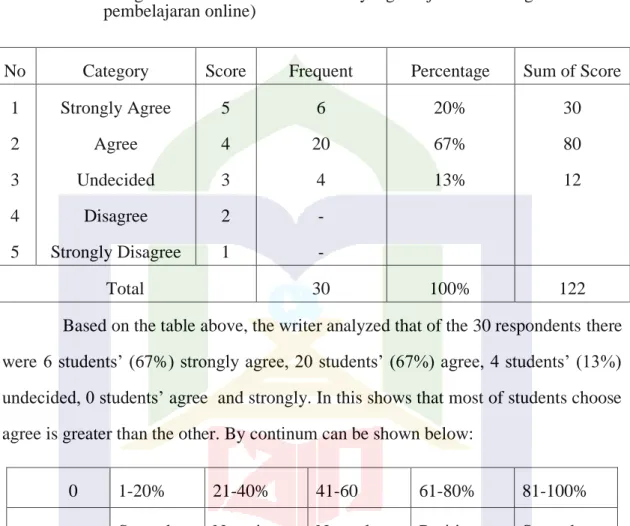
Discussion
Conclusion
The research can conclude that the field of English language learning of students has a positive based on the process of learning English. In terms of the element of the cognitive domain, it receives a high percentage score of 81%, the affective domain is 87%, and the psychomotor is 81%. With the total value using the formula, it gets a score of 77.33% in the positive category.
In this case, it shows the percentage of students' domain values showing high scores, indicating that the better the domain, the better the students' English learning results during pandemic covid-19. Researchers can conclude that the students' learning domain in English process during pandemic covid-19 at SMAN 10 Pinrang class XII Mipa 2, which consists of three aspects namely cognitive, affective and psychomotor has a high evaluation value. This may indicate that the students' domain is maximally reaching the English learning process during pandemic covid-19.
Suggestion
2 Saya dapat mencerna pembelajaran bahasa Inggris dengan baik jika materi dijelaskan oleh guru menggunakan media online. 3 Saya tidak dapat menulis ulang contoh kalimat waktu baru setelah guru menjelaskan materi bahasa Inggris melalui pembelajaran online. 4 Saya tidak bisa menerjemahkan kalimat bahasa Inggris ke bahasa Indonesia setelah guru menyarankan belajar melalui aplikasi Ome TV 5 Saya tidak bisa memprediksi jawaban yang benar.
7 Karena belajar bahasa Inggris, saya tidak dapat membuat 5 kalimat berbeda dengan menggunakan pola rumus yang sama yang diajarkan guru. 12 Saya dapat membaca ulang cerita fiksi dengan menggunakan bahasa Inggris yang benar setelah guru mengajarkannya terlebih dahulu 13 Saya selalu memperhatikan guru ketika. 14 Saat pembelajaran daring dimulai, saya senang mendiskusikan materi bahasa Inggris dengan teman-teman dalam kelompok.
18 Saya selalu antusias ketika guru menjelaskan materi pengajaran bahasa Inggris karena bahasa yang digunakan guru mudah dimengerti. 22 Saya dapat fokus belajar dan memperhatikan penjelasan guru di aplikasi Zoom ketika belajar bahasa Inggris. 23 Saya tidak punya waktu untuk menyelesaikan tugas bahasa Inggris yang diberikan guru melalui pembelajaran online.
24 Selama pembelajaran daring, saya dapat berlatih berbicara dalam bahasa Inggris setelah guru memberikan materi. 25 Saya tidak percaya diri ketika guru meminta saya berbicara bahasa Inggris saat pembelajaran sedang berlangsung melalui aplikasi Zoom. 27 Saat pembelajaran melalui aplikasi Zoom, saya selalu mendengarkan guru menjelaskan materi bahasa Inggris.
28 Keterampilan mendengarkan saya dalam pelajaran bahasa Inggris meningkat dengan pembelajaran bahasa Inggris online karena guru membiasakan berlatih mendengarkan melalui media sosial. 29 Sejak belajar bahasa Inggris melalui pembelajaran online, saya sudah bisa menggunakan komputer/laptop untuk menunjang pembelajaran saya dengan lancar.
